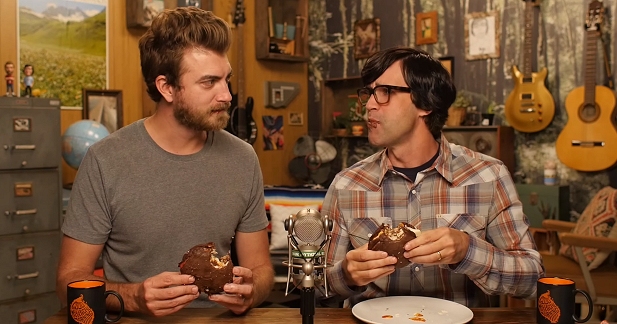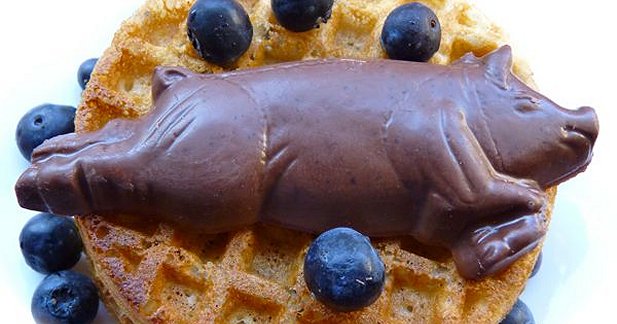chocolate education

Divine, Cheese, and Wine!
January 4, 2016
A friend of mine, Amanda, recently moved into new a home. “I’ll bring the wine and cheese”, says my friend Kathy. “I’ll bring the chocolate”, I say, “Why don’t we pair the chocolate with the wine and see what happens?”
They agreed to the plan, but confessed to not having much experience consuming the two at the same time. However, being lovers of both chocolate and wine, they couldn’t see a downside. This would be an opportunity to eat, drink wine, and experiment – a few of our favorite activities!

Will It Chocolate? Funny Video Friday!
October 23, 2015
Good morning, and Happy Friday from CUO!
As you know, we're all fun and games in the world of chocolate. Today, we bring you a video that has an extra dose of funny chocolate humor.
This video is a gem. It made me literally LOL!

The CUO Chocolate Survey – We Want To Know!
August 28, 2015
Here at CUO, we're always learning about chocolate, and all things pertaining to the rich, dark, wonderful substance.
Now, we want to learn from YOU! Read more

The Versatility of Chocolate
October 3, 2014
I’ve been eating a different chocolate each day for more than eight years. I love the unadulterated flavor notes in a well-made single origin chocolate bar. However, I’ve also come to admire the amazing versatility of cacao after blending different chocolates with fruits, nuts, spices, beverages and savory items over time.
What makes good flavor blends in food? Fresh ingredients, and a skillful mix of the five basic tastes--salty, sweet, bitter, sour, umami (meaty, savory)--are two considerations. And these do apply to chocolate as well.
Q&A: What’s the Big Deal About Lecithin?
August 22, 2014
Recently a reader asked me the following question. It's a good one, so I wanted to answer here on the blog...
What is the big deal about soy lecithin and if most artisan producers manage to do without it, why don't all chocolatiers?
The big deal about soy lecithin is a combination of science and economics.
Read more
Chocolate Travel for CUO Graduate School
June 24, 2013
I am really excited to announce our first ever CUO Chocolate Immersion which will take place at Walt Disney World® Resort, February 7-12, 2014. If you have already taken our classes, then consider this your "graduate school."
How To Fully Enjoy Your Chocolate
April 5, 2013
"Mindful eating goes beyond eating," said Lilian Cheung, a registered dietitian, co-author of Savor: Mindful Eating, Mindful Life, and director of health promotion and communication at the Harvard School of Public Health in Boston, Massachusetts.
You can easily be more mindful if you opt for high-quality chocolate and check the label before buying. You can get an instant idea regarding the sweetness or bitterness of chocolate by understanding the chocolate to sugar ratio.
"If you buy chocolate with a higher cocoa content, it will be less sweet," said Stephen Durfee, a pastry chef instructor at the Culinary Institute of America at Greystone, in St. Helena, California. "You will get more of the natural flavor of chocolate."
Dutch-Process vs Natural Cocoa Powder
May 24, 2012
There are a lot of variations of cocoa powder. Two of the most prominent types around the world are the Dutch-processed cocoa powder and natural cocoa powder.
Dutch-processed cocoa powder is made from cocoa beans that have been treated with a potassium solution. That neutralizes the acidity of the cocoa beans.
On the other hand, natural cocoa powder is derived from the cocoa beans that have been simply roasted and then reduced and pulverized into a fine powder.
Read more
Cacao Nibs
May 10, 2012
Cacao nibs have enjoyed an increased amount of attention lately. They are turning up almost everywhere nowadays, but since they are often just added to other products, many people don't really know what they are.
Nibs are actually cocoa beans with the shell removed. By the time you get them as an ingredient they have usually undergone roasting and prepping to a point that making them into bars is the only major step that remains.
The chocolate making process consists of grinding up the cocoa nibs into a very consistent and thick paste and then adding sugar. For milk chocolate, milk powder would be added. For some chocolate, extra cocoa butter might be added. But the basis of all chocolates are the ground up nibs.
Read more
About Organic Chocolate
April 12, 2012
Organic chocolates are made of cacao beans that are cultivated without using any synthetic pesticides, herbicides, or fertilizers. Authentic organic chocolates also utilize organically grown sugar.
In America, specific standards of qualification (set by the USDA) need to be met in order for a product to be called organic. That said, when you eat organic chocolate, you can rest assured that you are consuming those ingredients that have been farmed in an environmentally-suitable manner.
One primary reason why it is best that you opt for organic chocolate, instead of its non-organic version, is the fact that you decrease your chances of ingesting harsh pesticide residues. Non-organic chocolate, especially dark ones, are fine to eat all their own. However, the drawback there is the possibility of also eating the pesticide residue, if any, in the cocoa used. In great enough quantity, this could lead to certain health problems.
Read more


